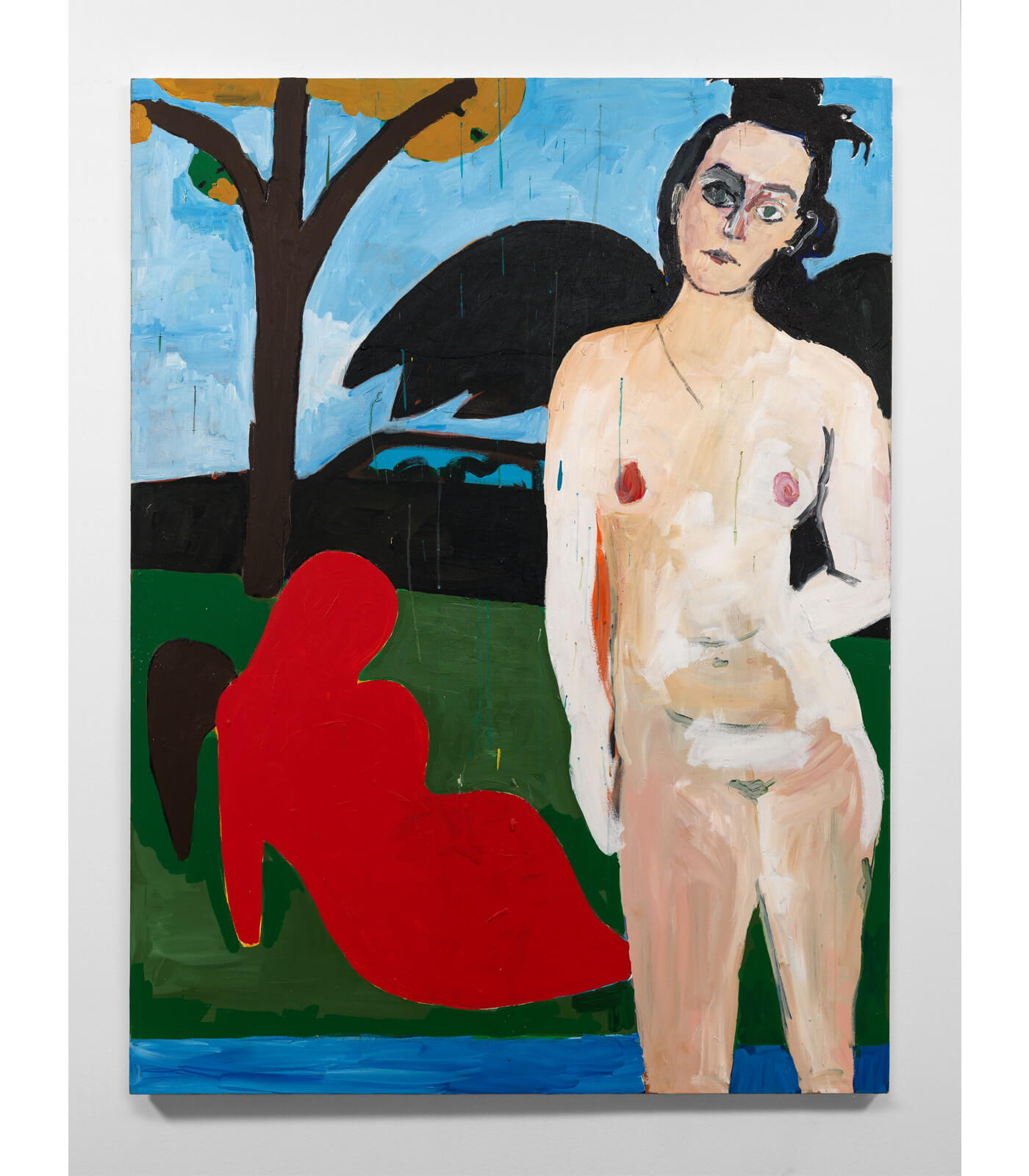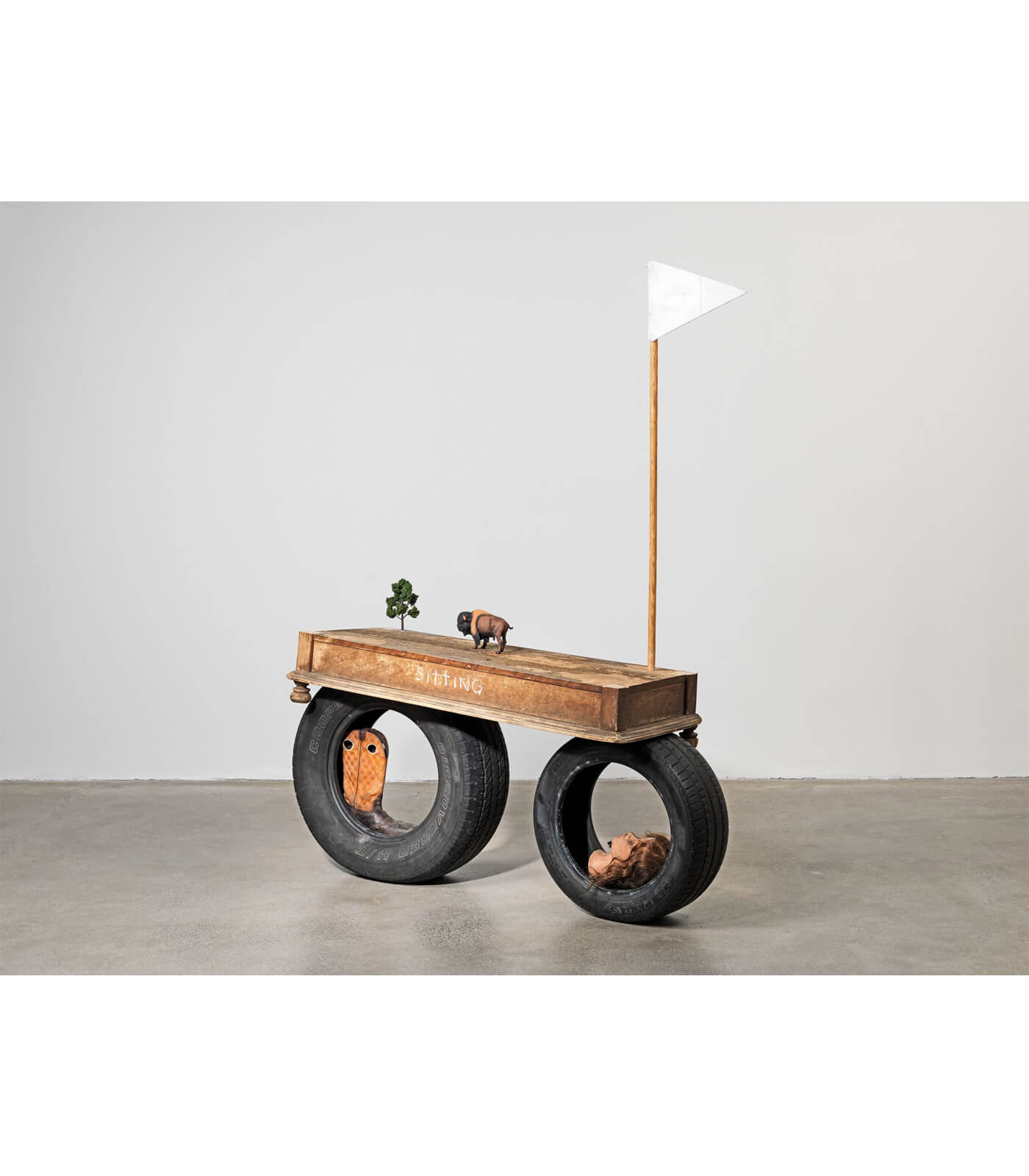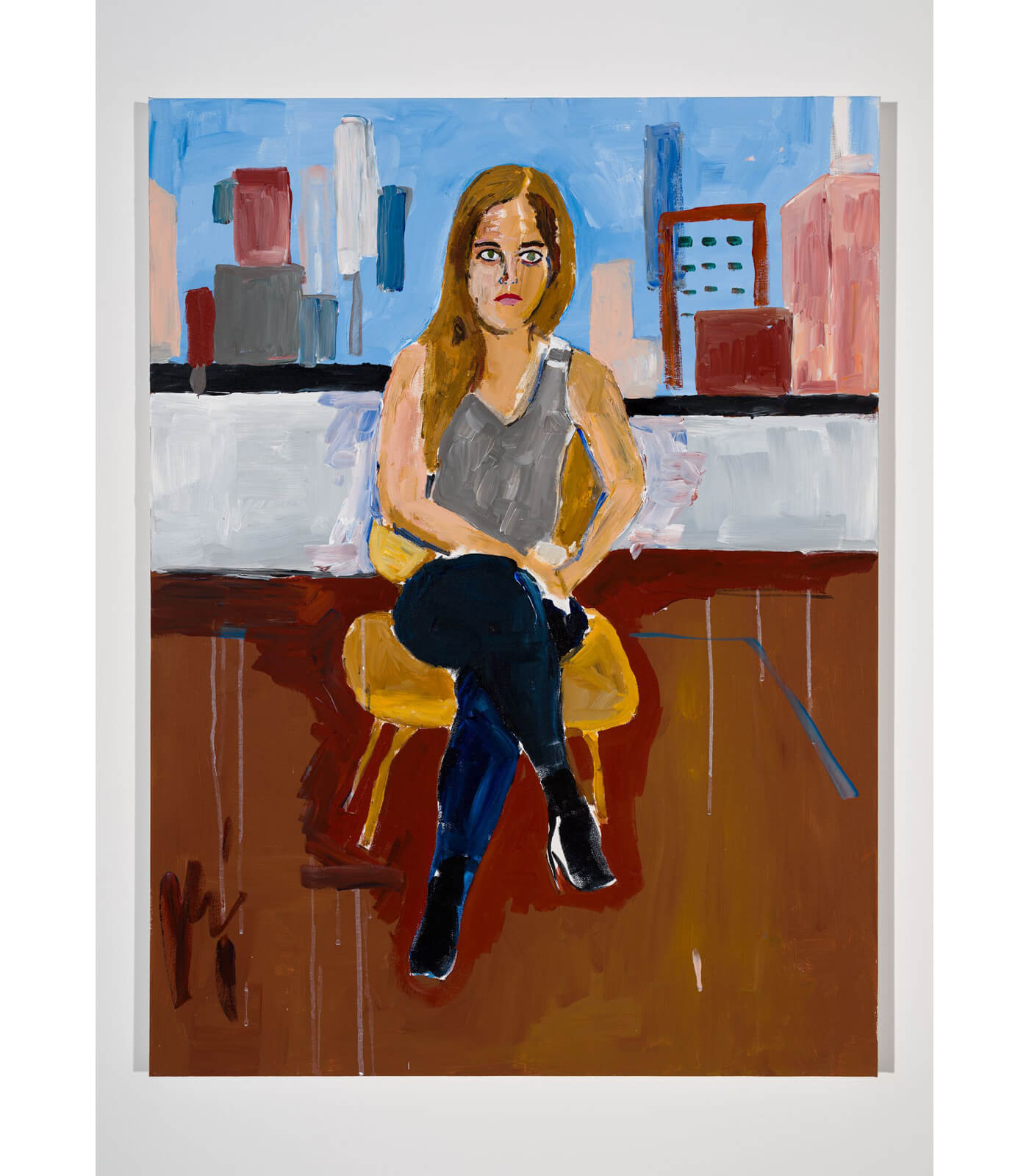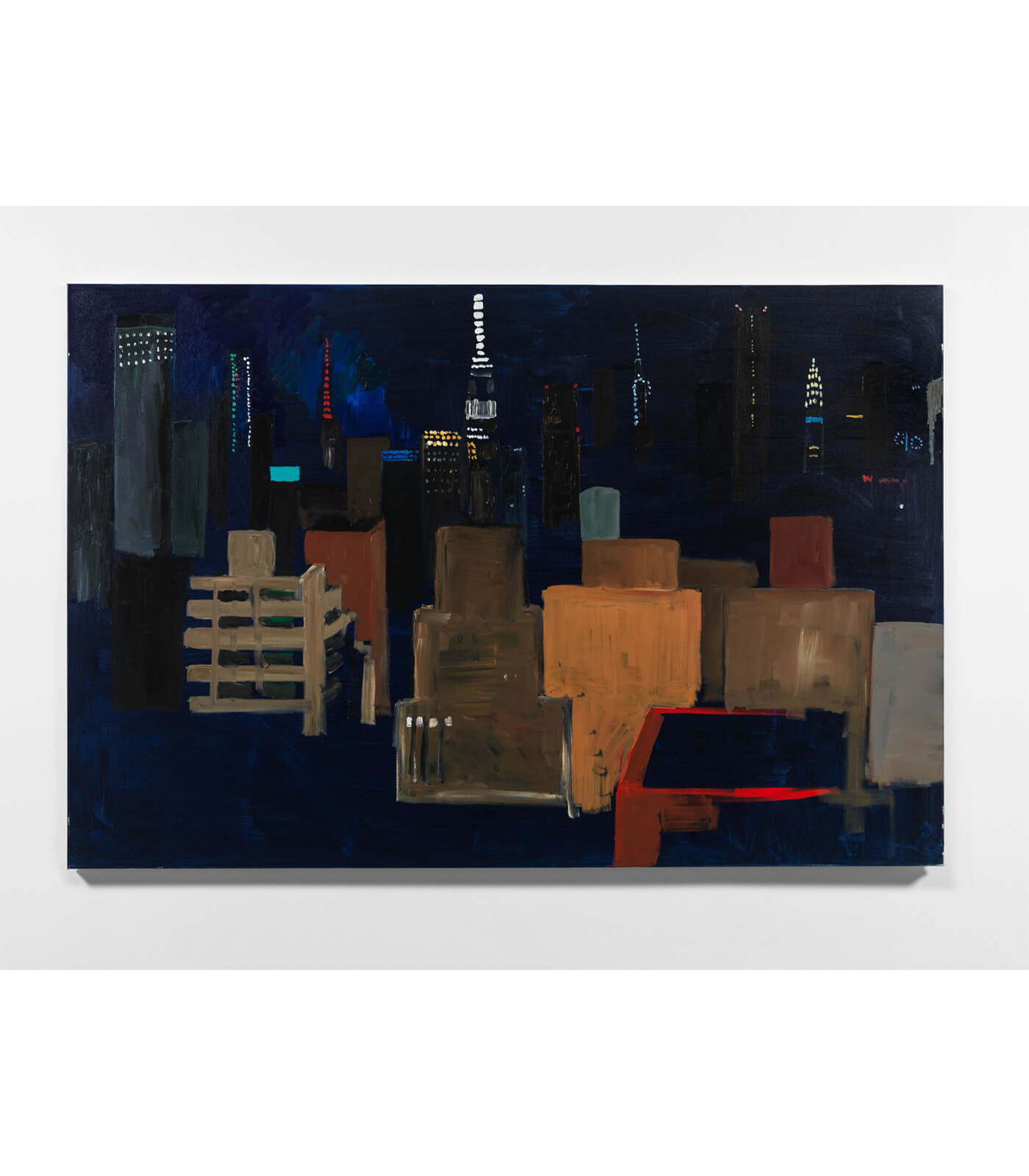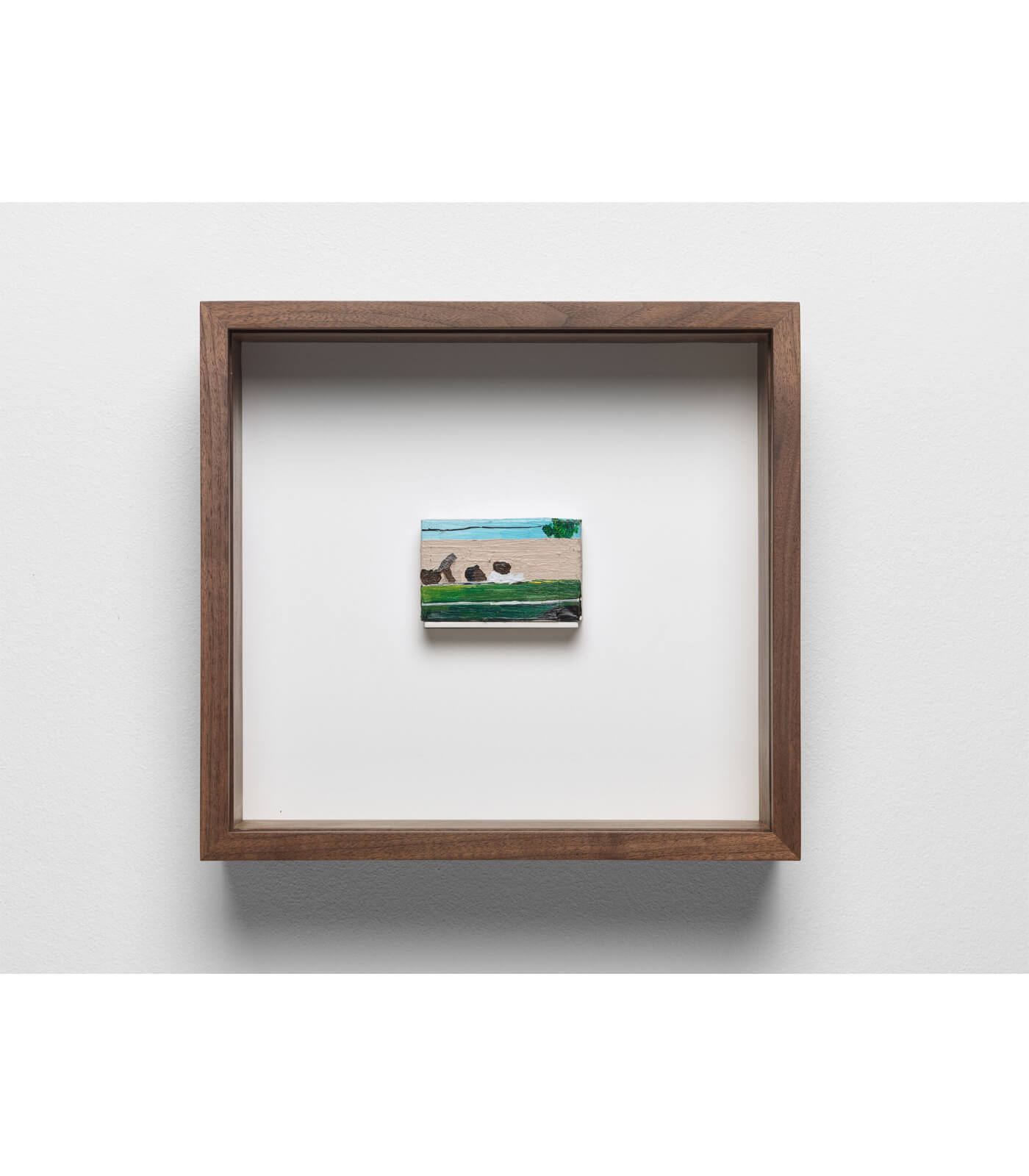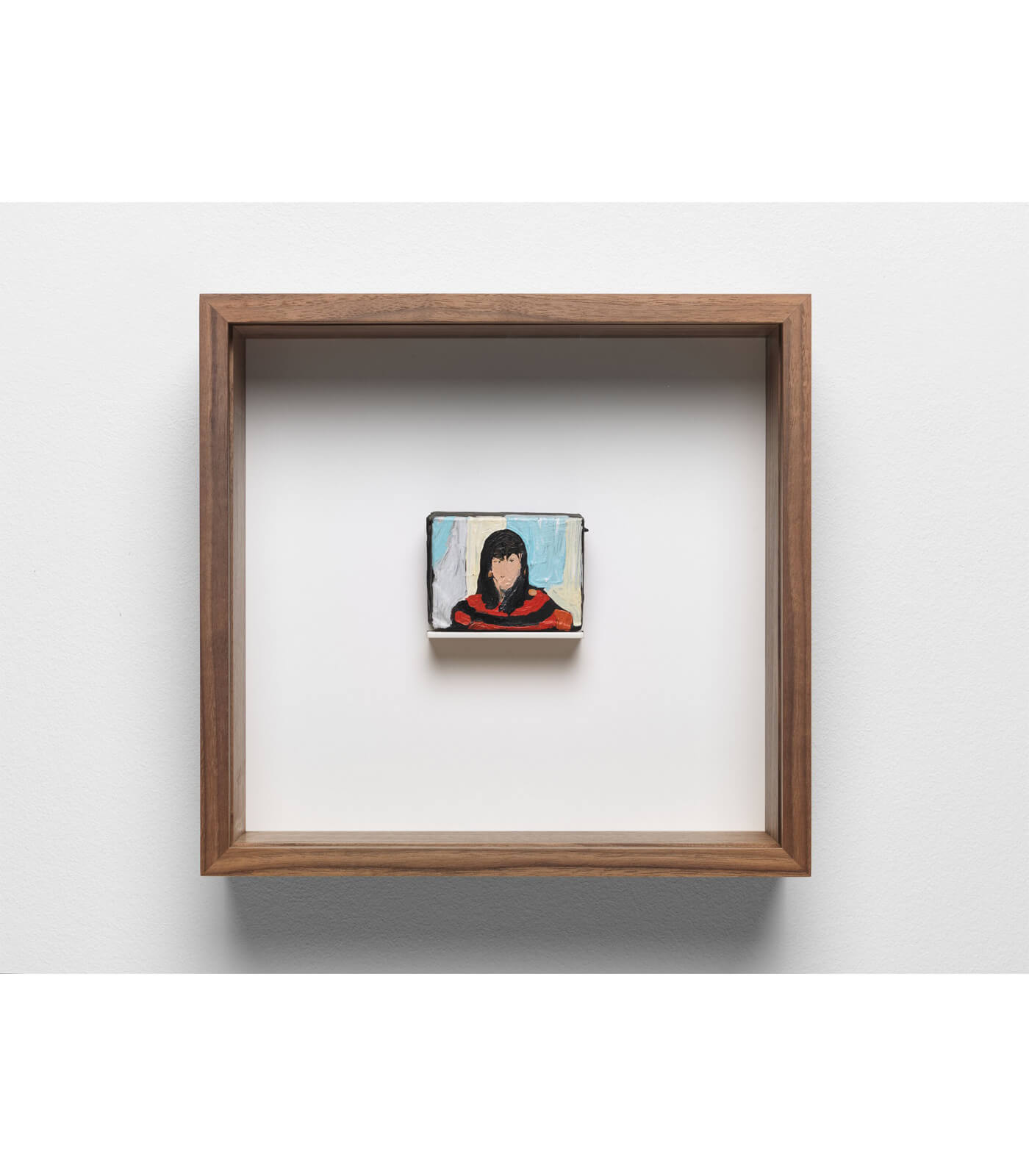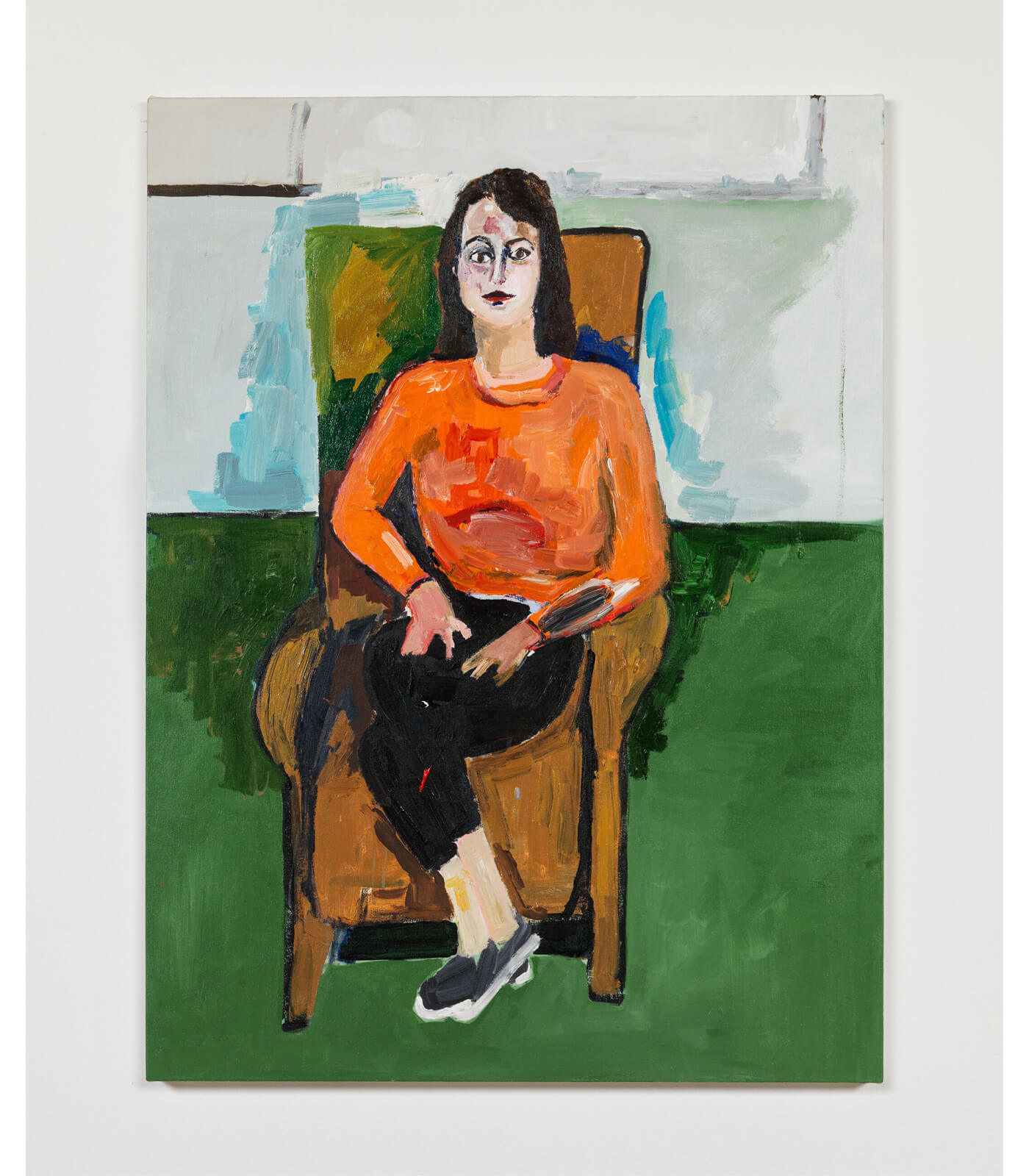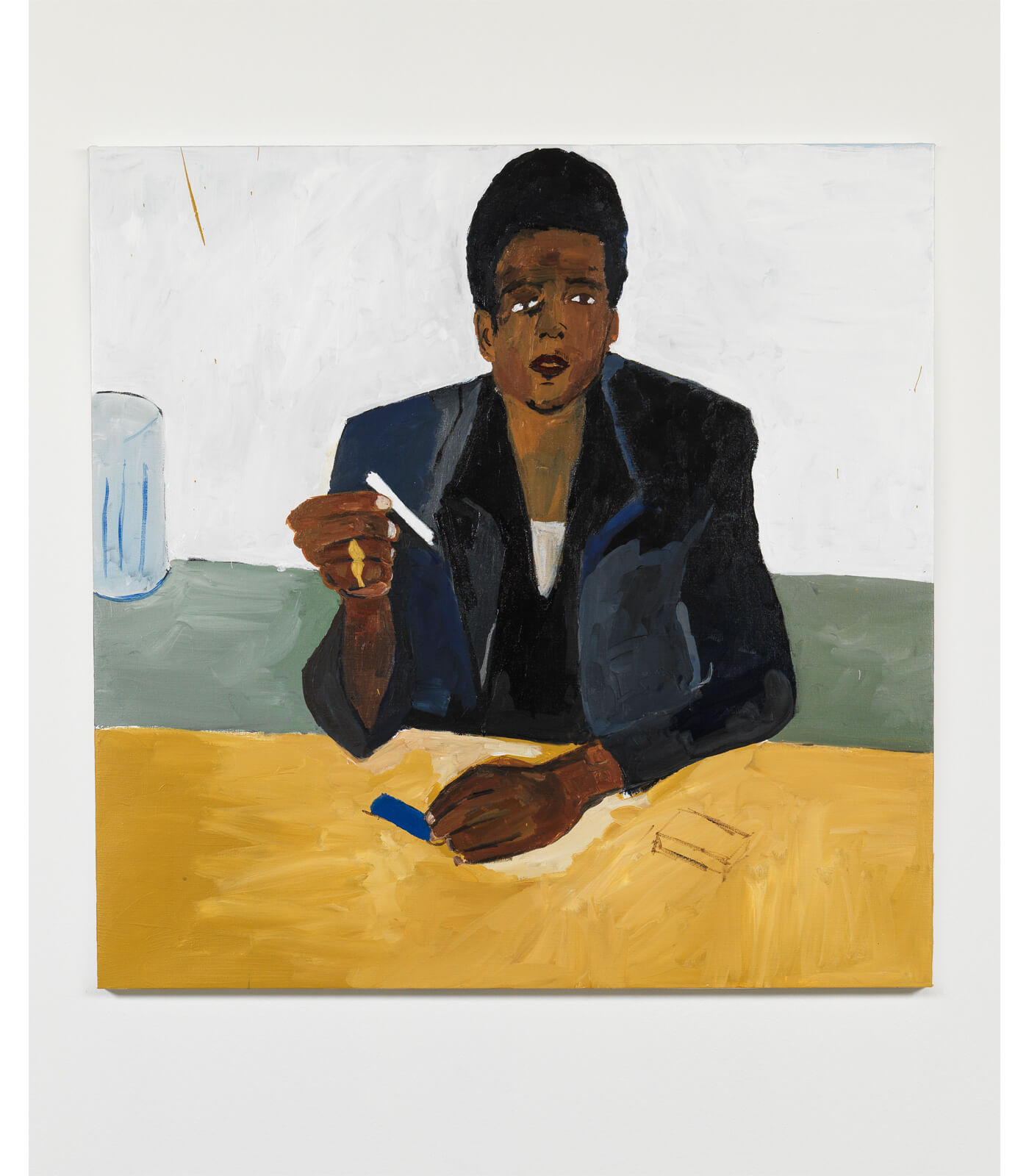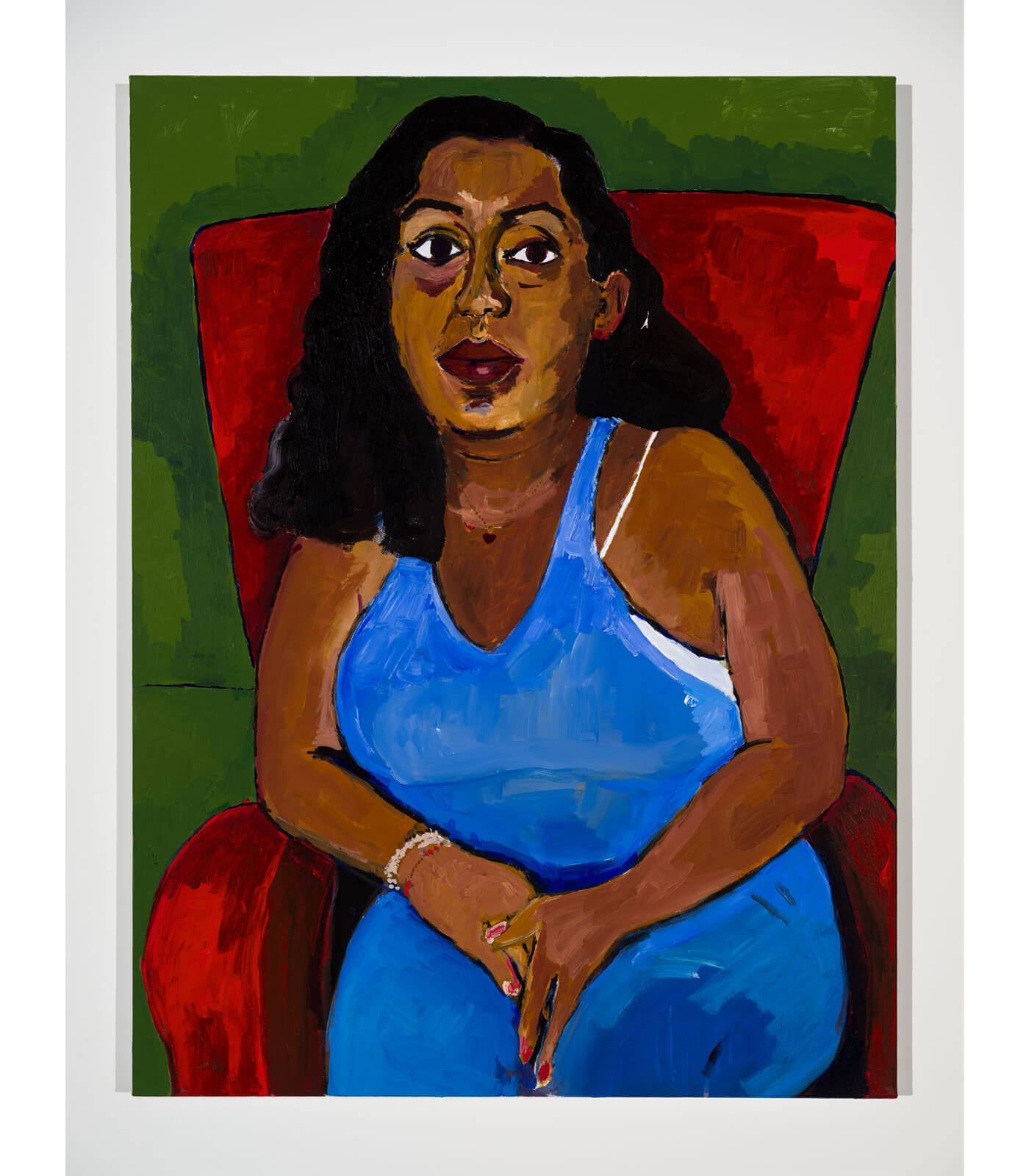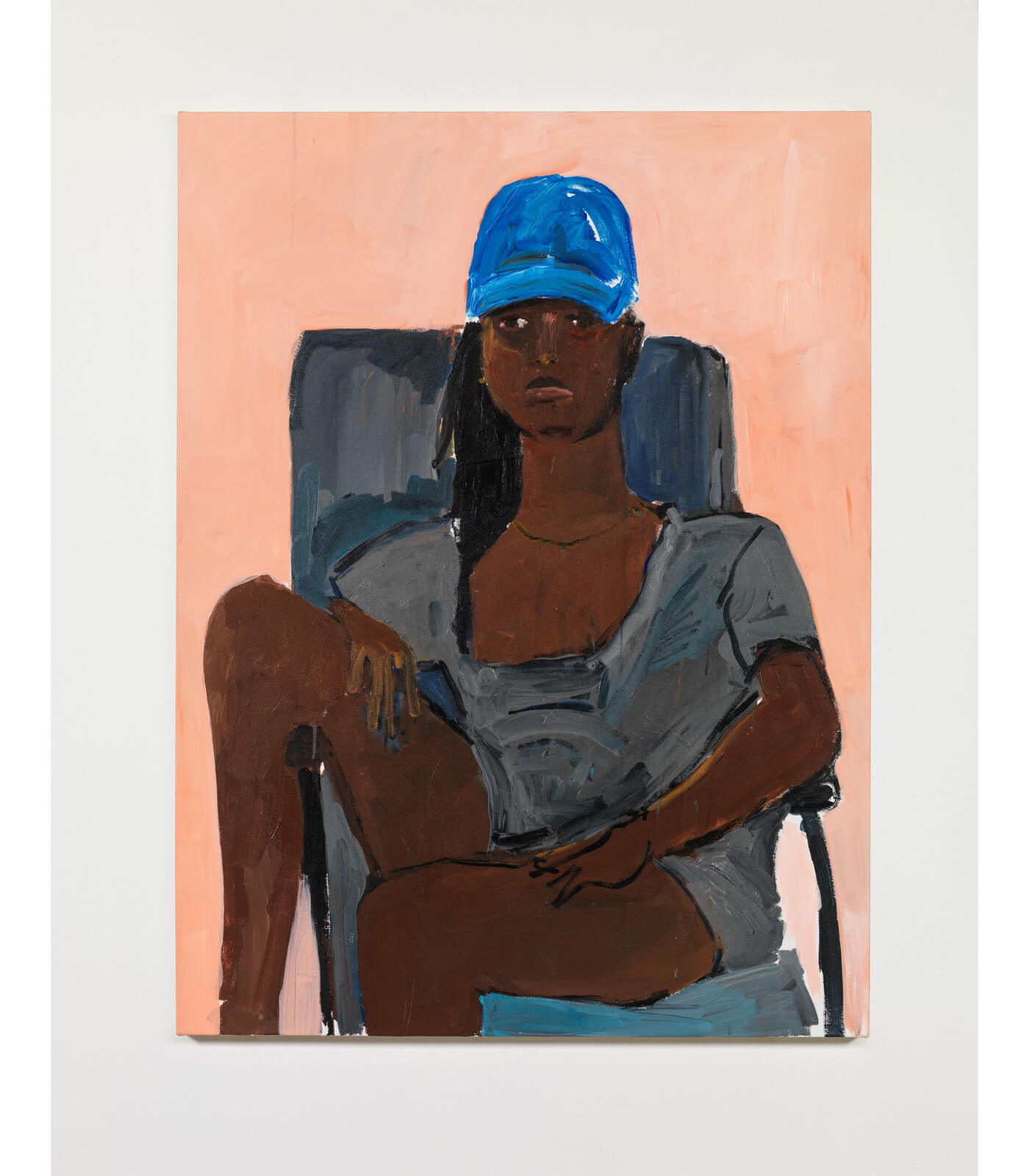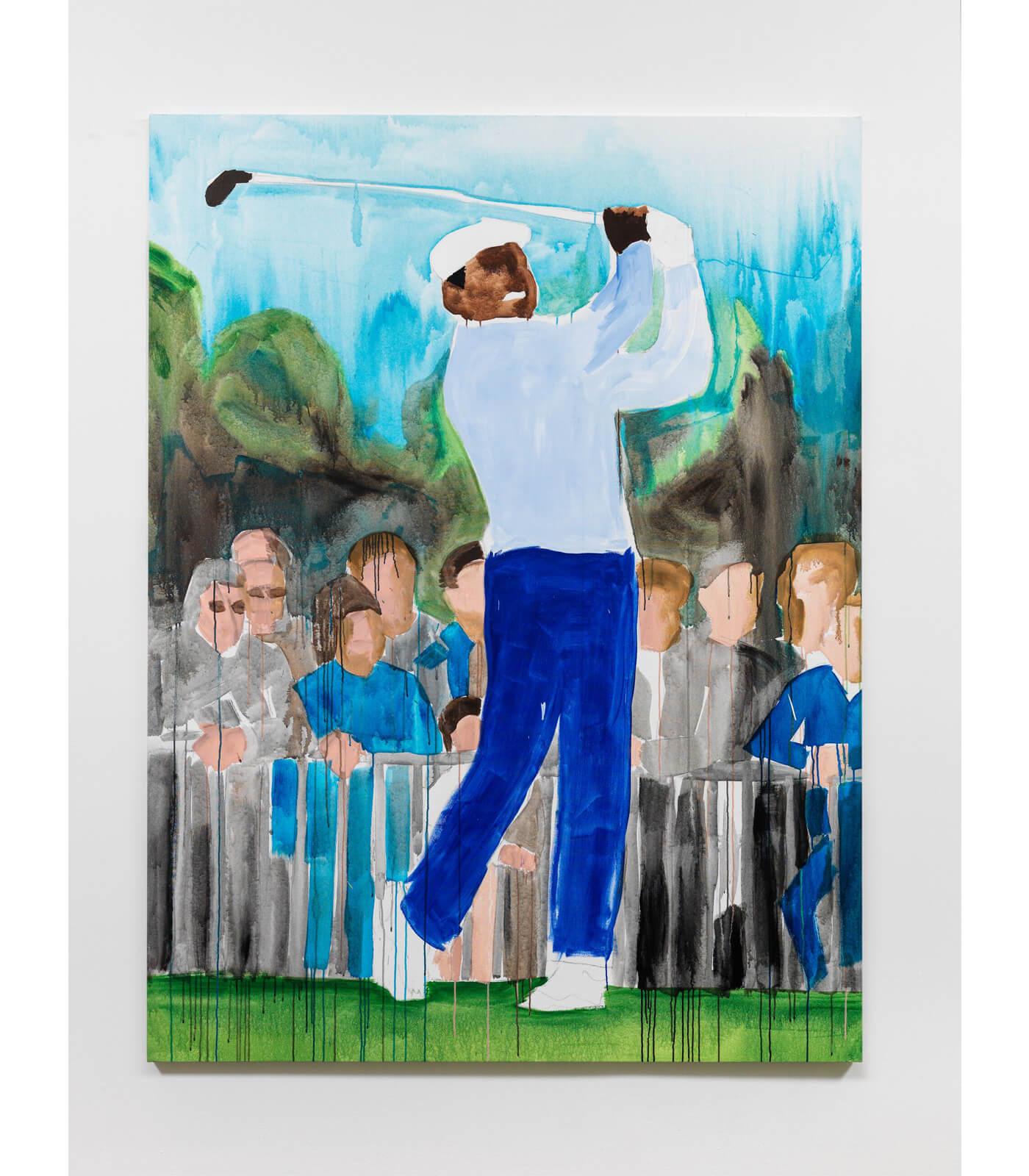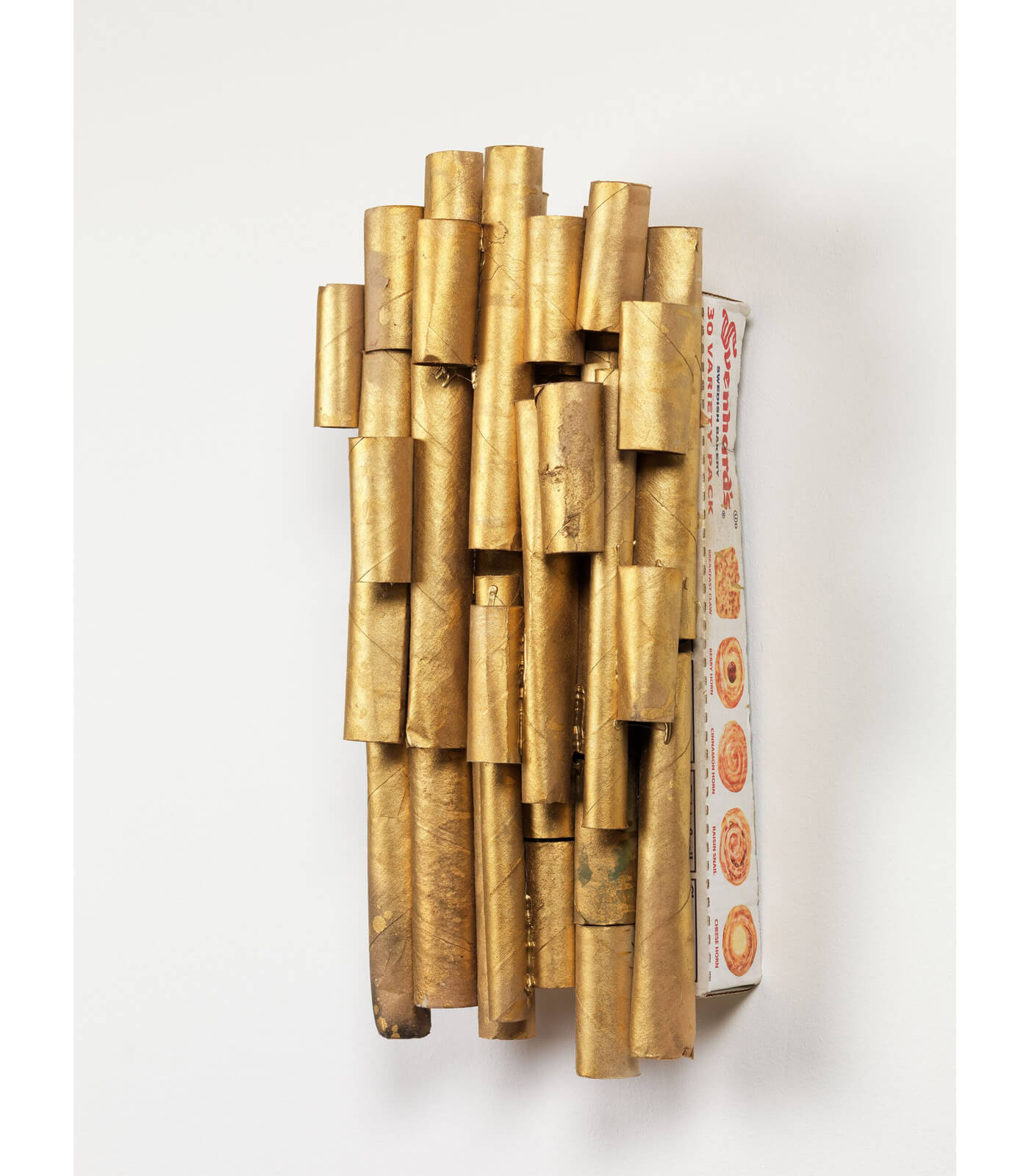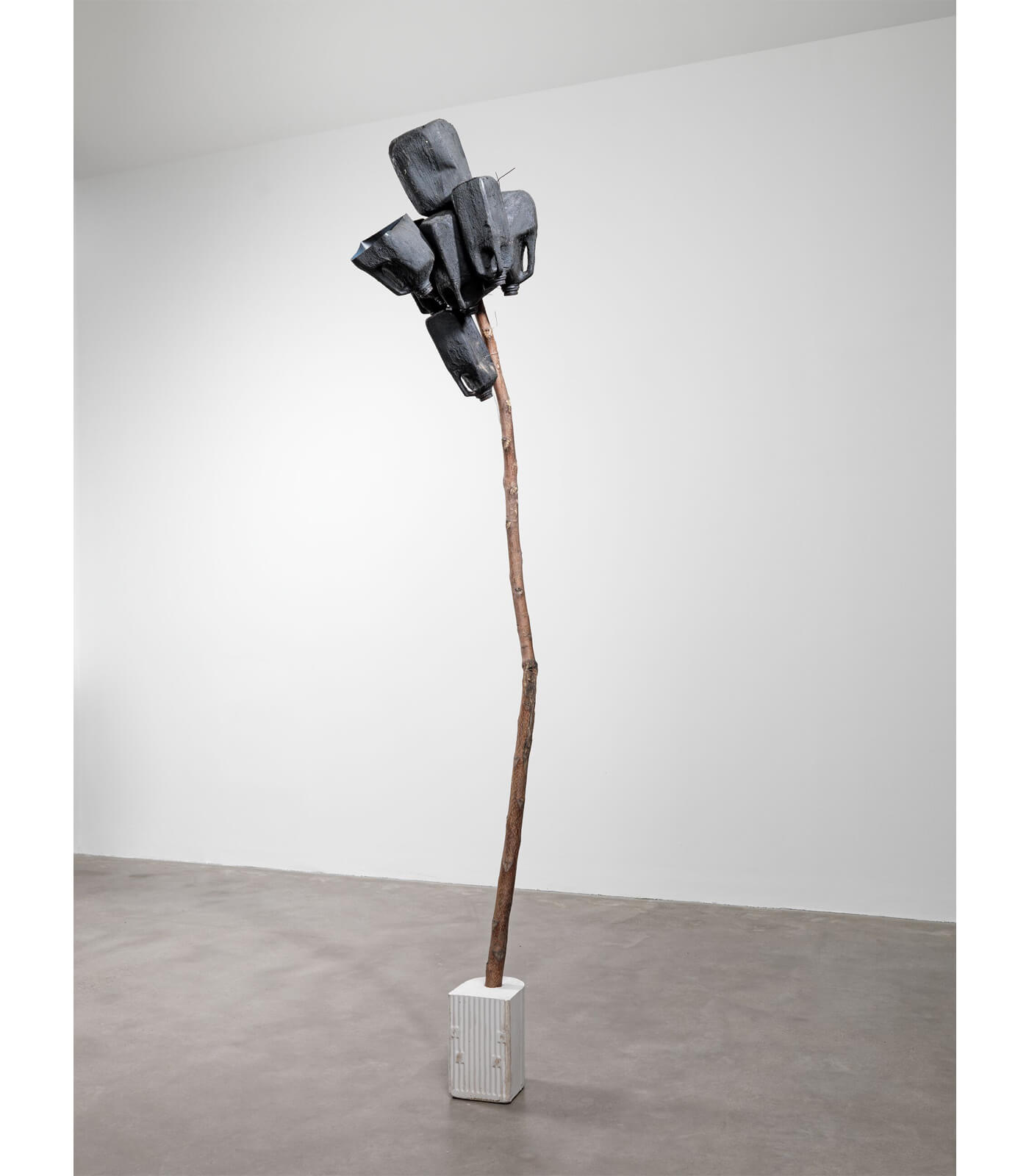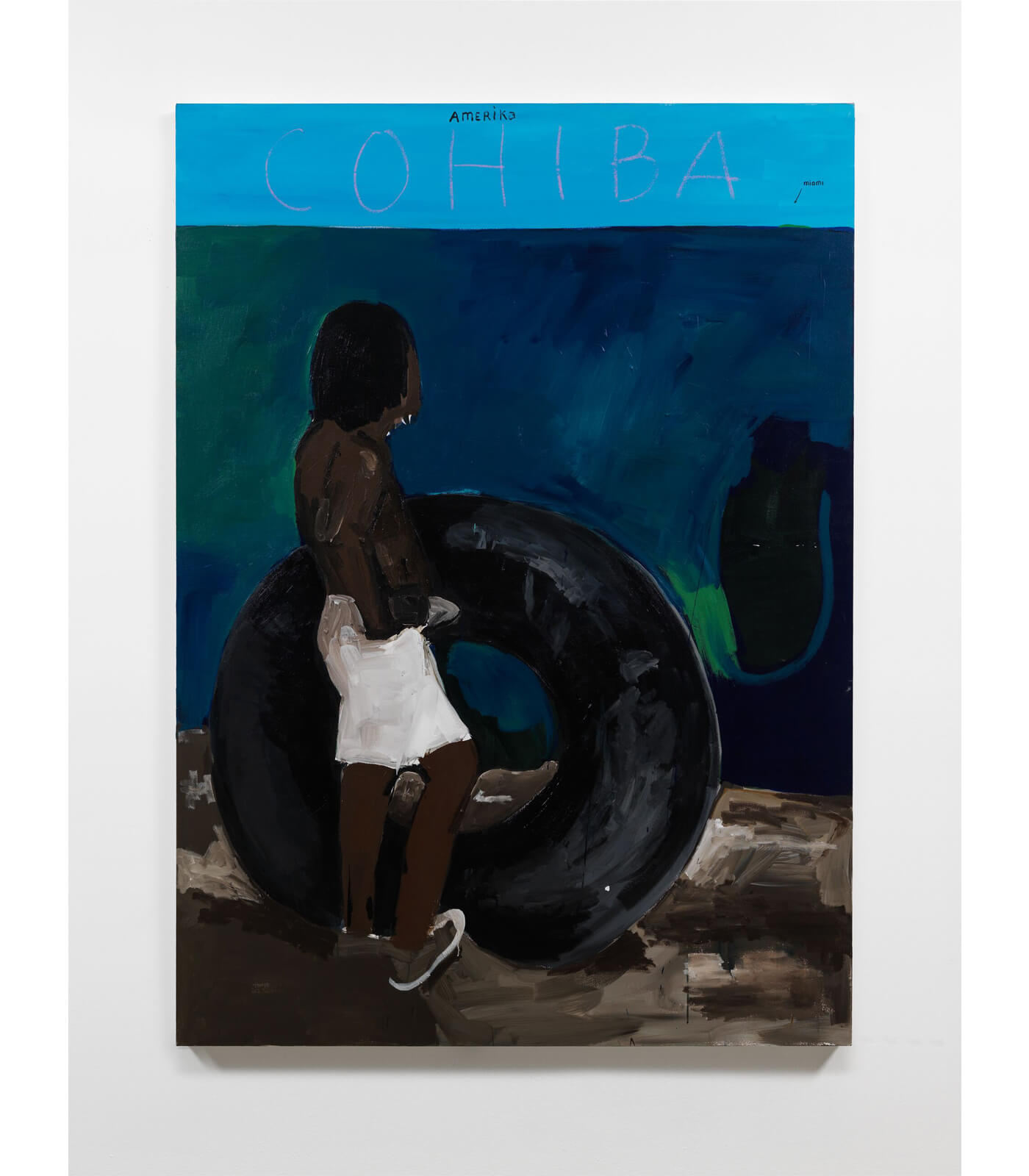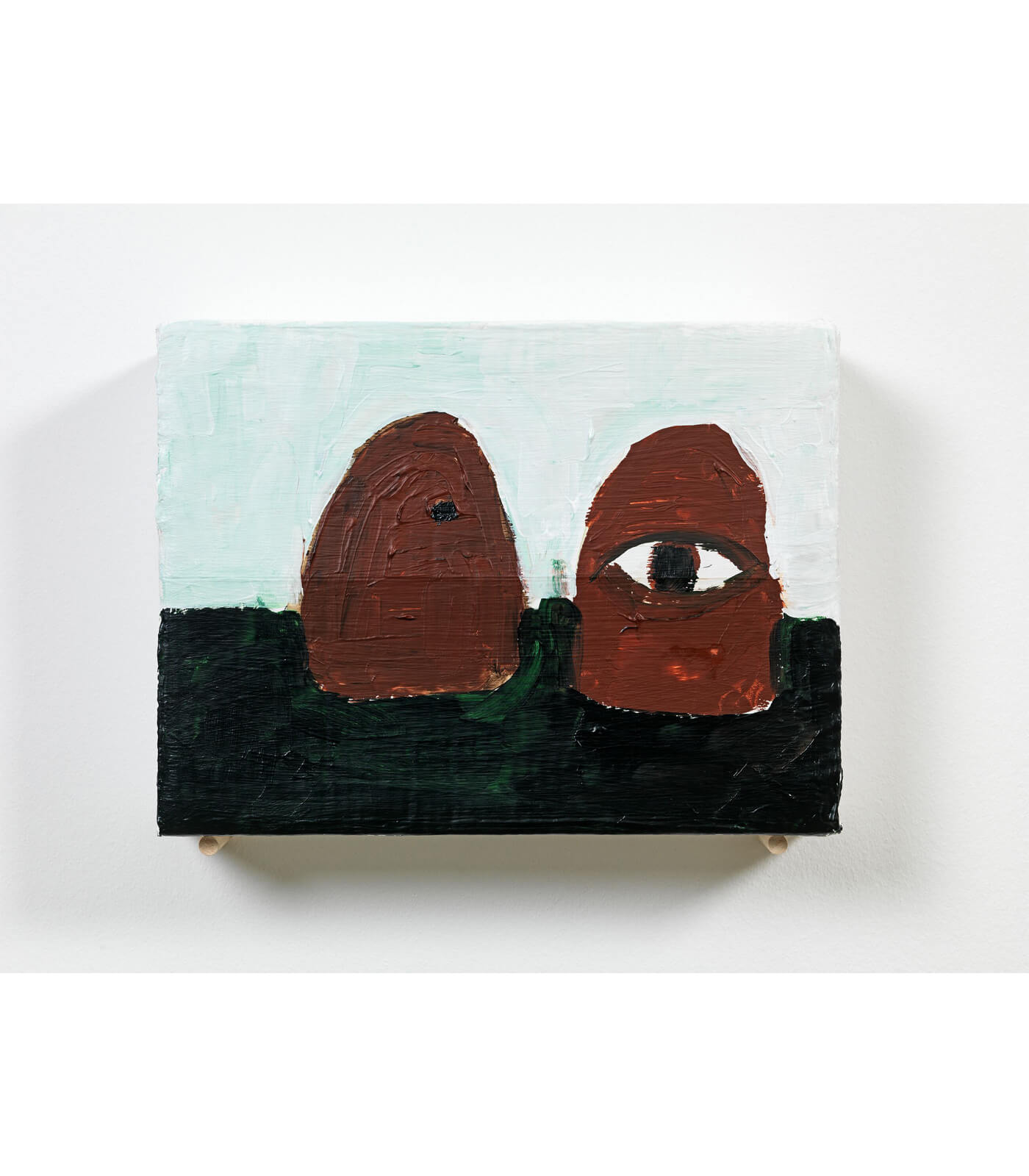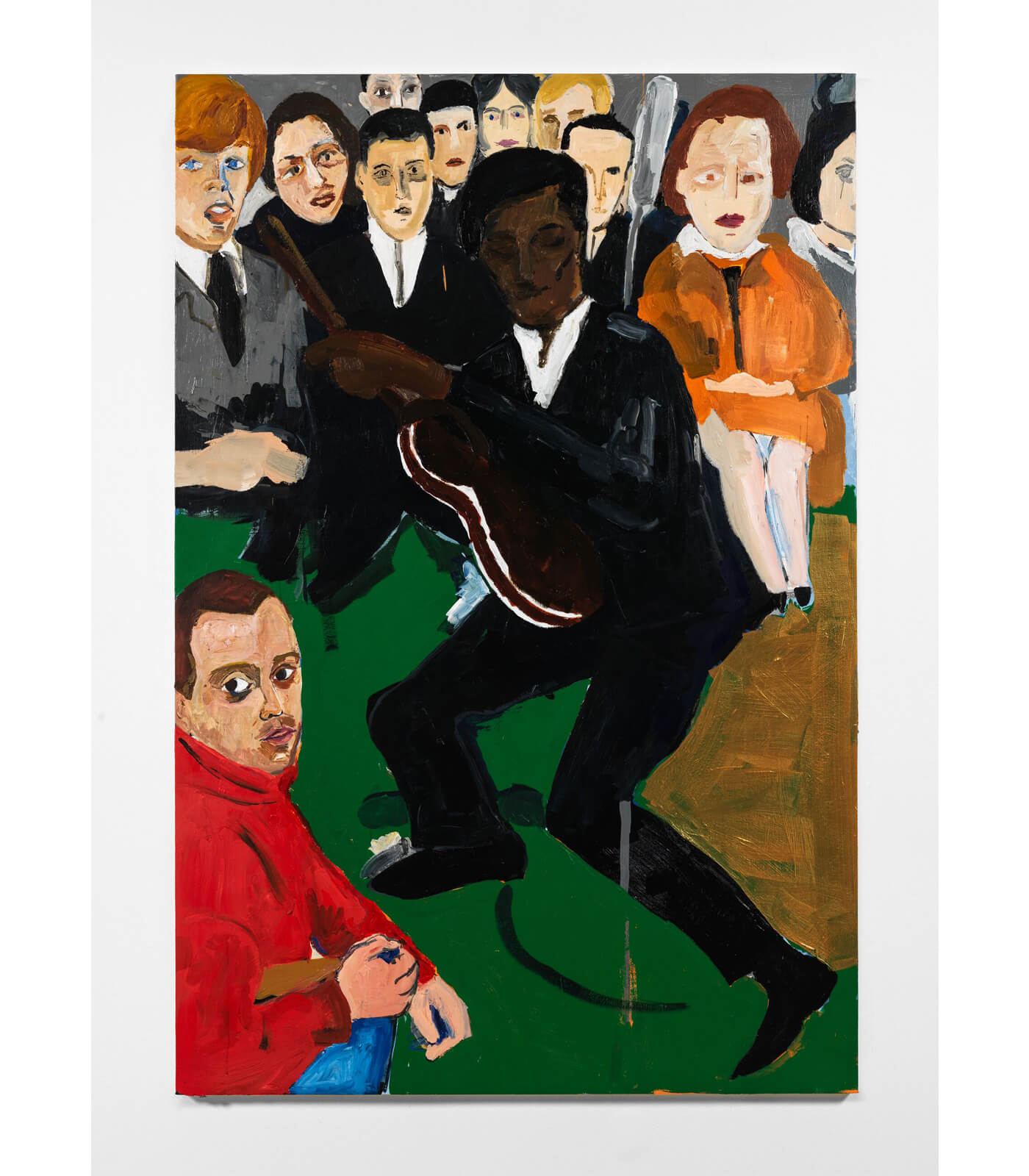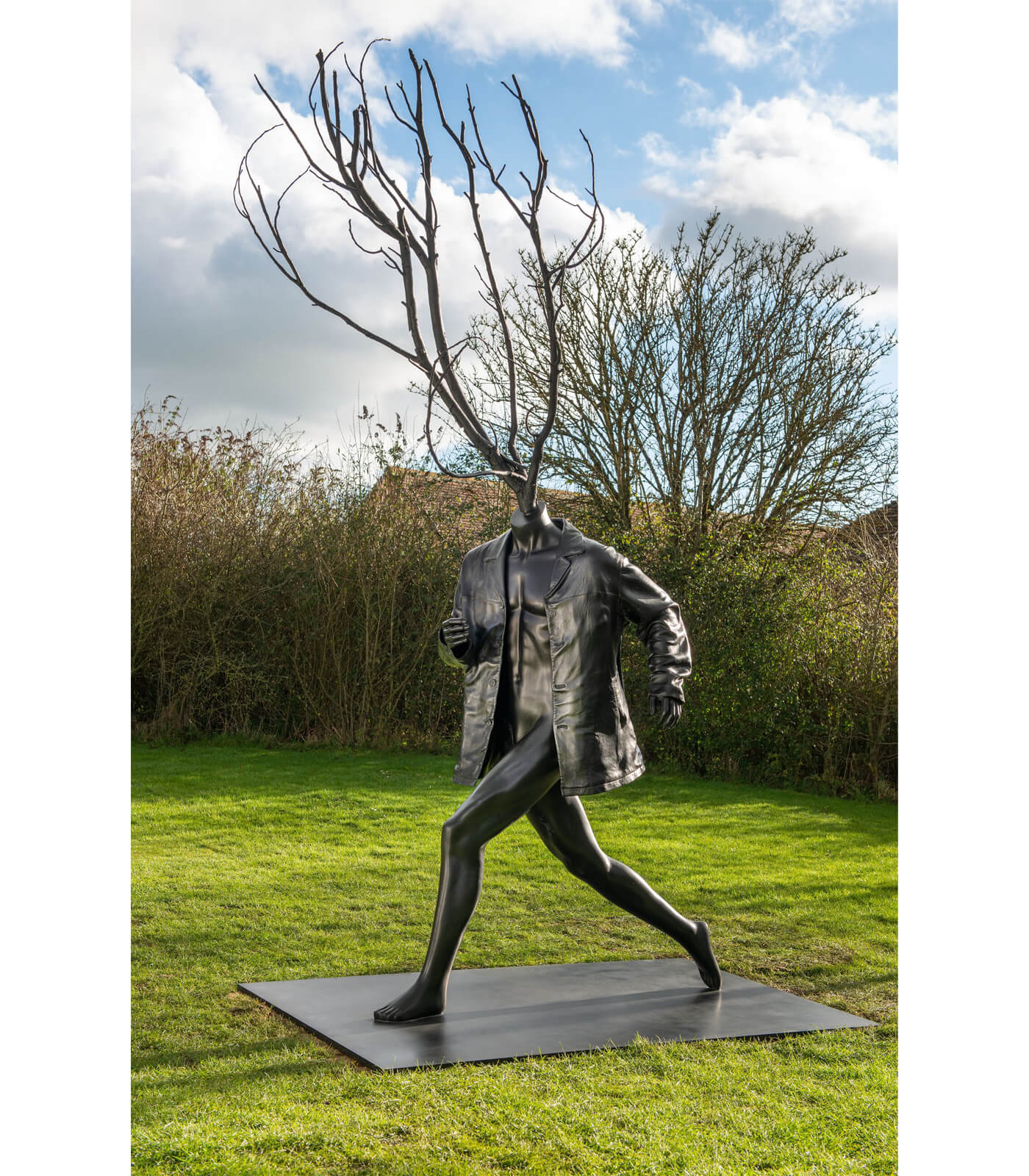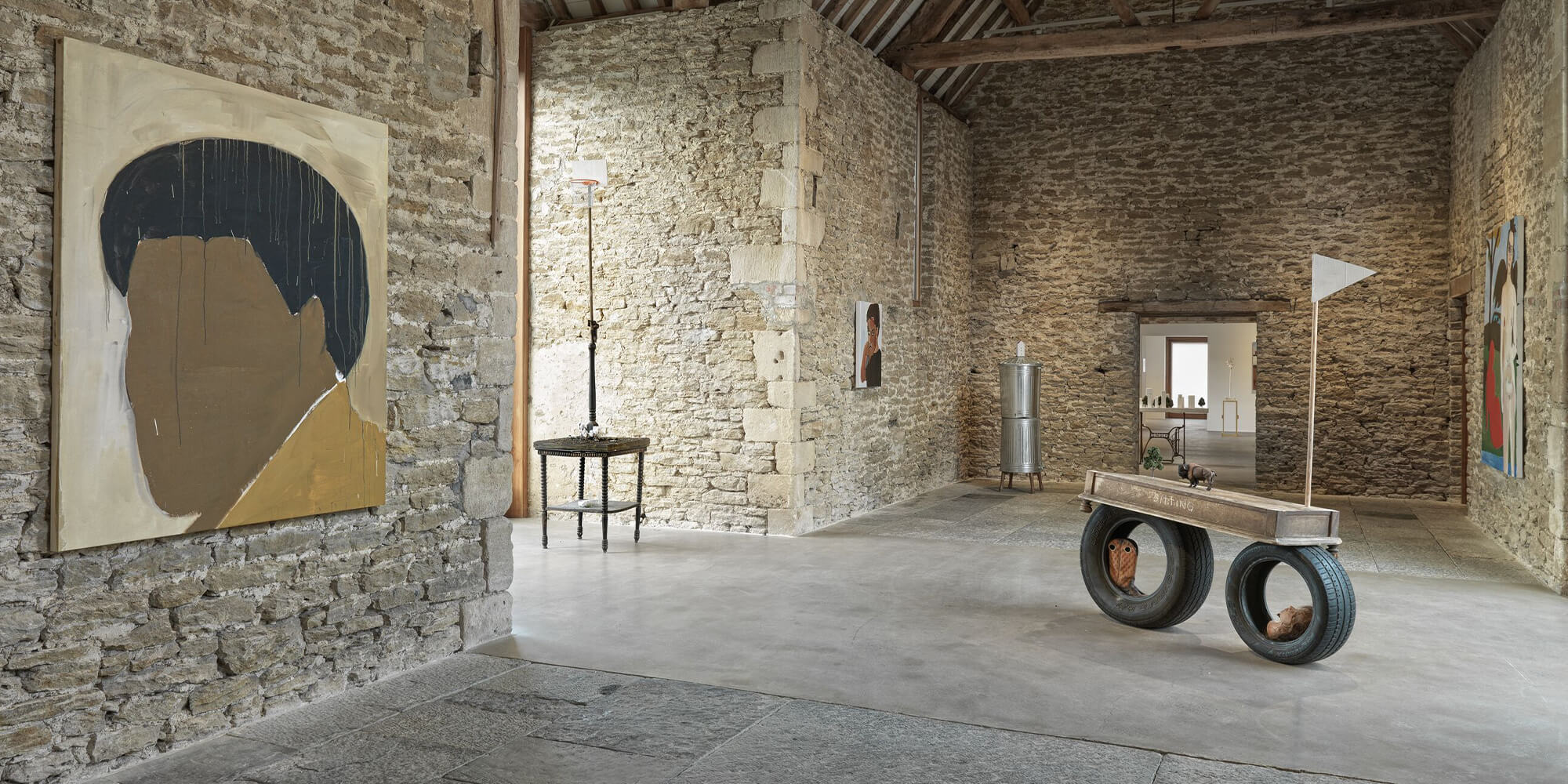
Henry Taylor
26 February – 6 June 2021
Somerset
Henry Taylor culls his cultural landscape at a vigorous pace, creating a language entirely his own from archival and immediate imagery, disparate material and memory. Through a process he describes as ‘hunting and gathering,’ Taylor transports us into imagined realities that interrogate the breadth of the human condition, social movements and political structures.
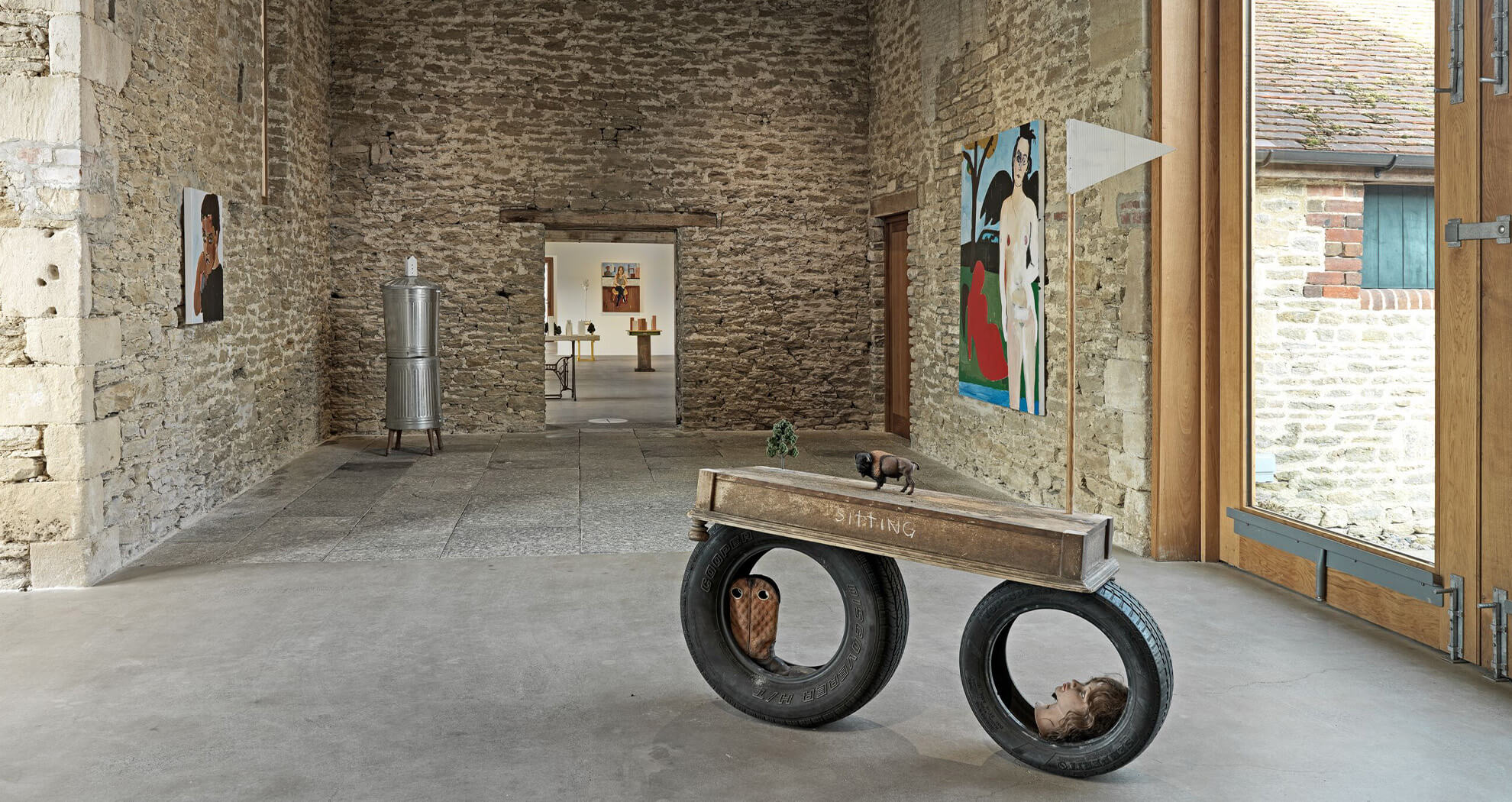
Explore the exhibition
For his inaugural exhibition with Hauser & Wirth, the American artist has taken over all five galleries in Somerset to present a major body of sculptural work and paintings evolving in unison across the spaces. Throughout his four-decade long career, Taylor has consistently and simultaneously both embraced and rejected the tenets of traditional painting as well as any formal label. He has amassed a staggering body of highly personal work rooted in the people and communities closest to him, often manifested alongside poignant historical or pop-cultural references.
This exhibition contains language that some may find challenging

Taylor’s lean towards standalone sculpture over the past decade has allowed him to reconfigure commonplace objects into stories of his own lived history. Throughout the first two galleries we journey through new installations made over the past six months, including a series of tabletop sculptures that relate directly to the landscape of a city, urban planning and an altered perspective looking down into housing projects.
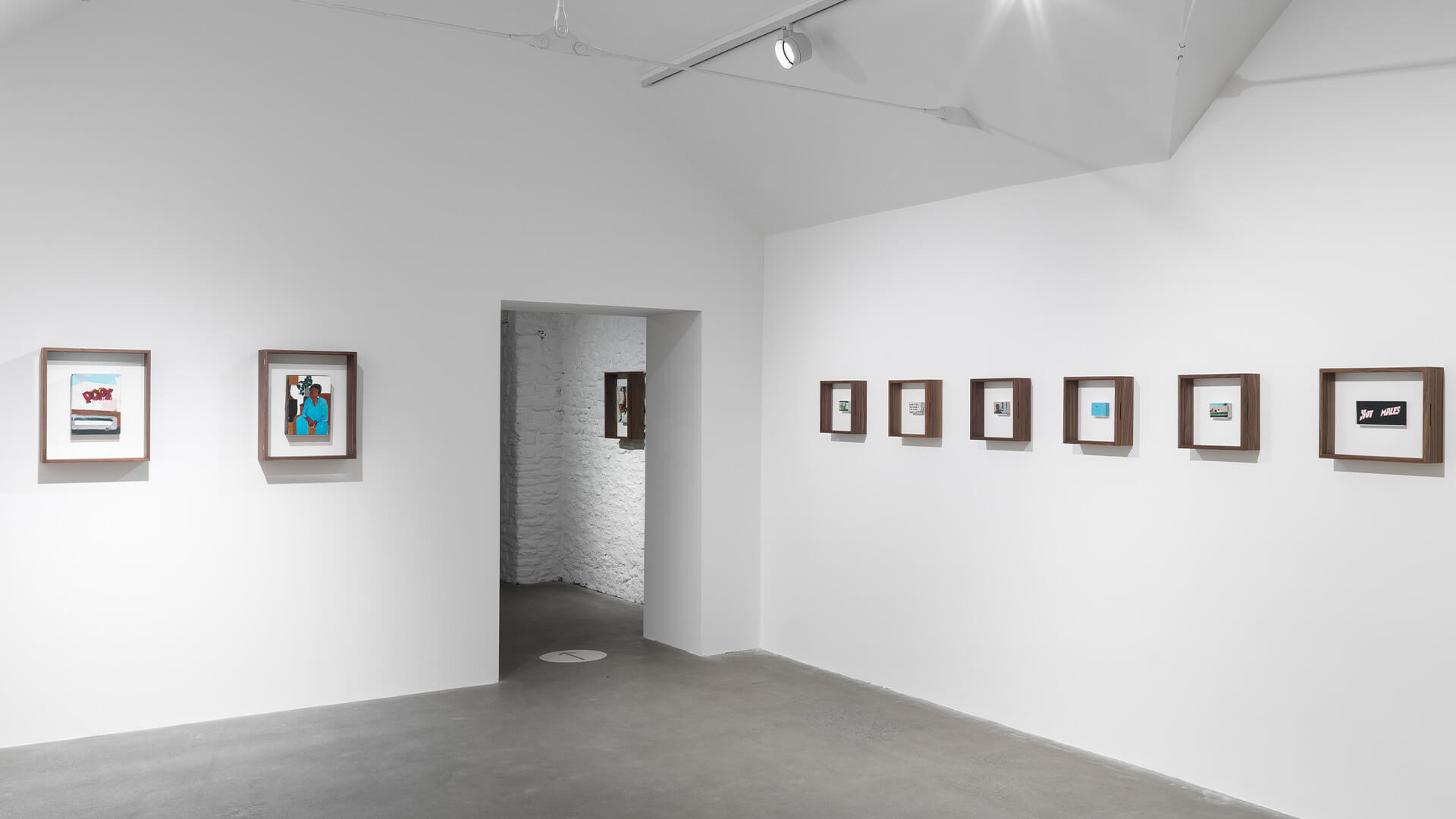
A series of miniature box paintings in the Pigsty gallery act as a conduit between Taylor’s painting and sculpture, serving as a continuous thread in his studio practice. This will be the first time these works have been presented on a scale of this size in Europe. The earliest, made in the 1990s while Taylor was still a student, are painted on cigarette, cracker, and cereal boxes, surfaces that were on hand at the time. Acting as fleeting thoughts and records, the miniature works span intimate domestic scenes to prison visits and playful reinterpretations of the boxes’ original logos. Tactile, expeditious, and recognizable, Taylor repurposes the box both as substrate and subject.
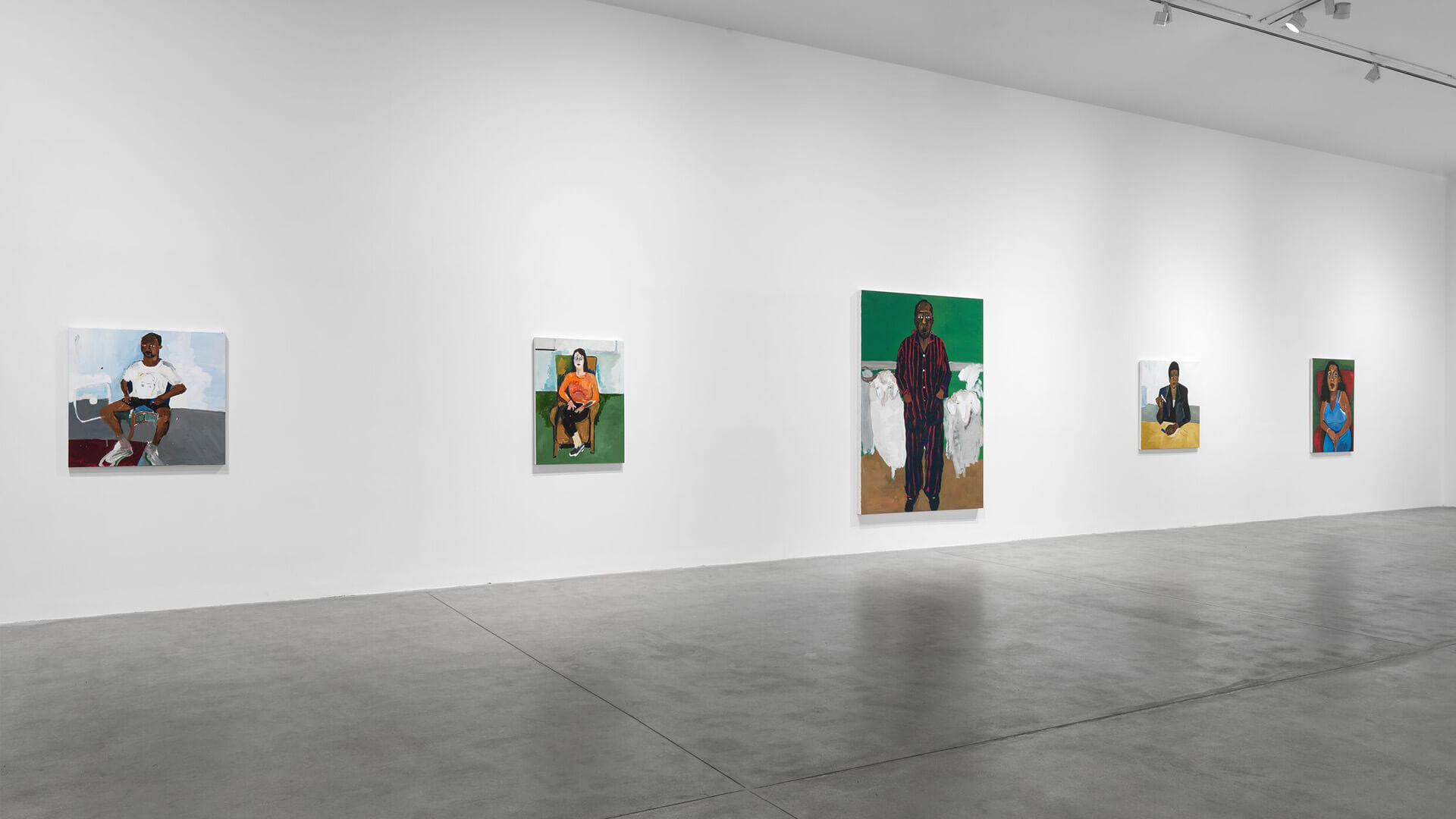
In preparation for the exhibition, Taylor extended and unraveled his studio practice within the galleries at Hauser & Wirth Los Angeles, followed by an artist residency at Hauser & Wirth Somerset this winter – energetically building, stacking and affixing a vast array of collected objects together to create a holistic record of his everyday routine and the materials that define them. With a guiding sense of human connection, Taylor layers reoccurring visual cues associated with his own personal experiences and broader cultural references that lead us through a multifaceted narrative in sculpture and painting.
Ahead of the exhibition, Henry Taylor spent the winter months in Bruton, Somerset, as artist-in-residence. Working in the studio through the national lockdown, Taylor’s gaze turned inwards, creating new self-portraits such as his depiction as Henry V, a play on his childhood nickname.

Repetitive objects connected to voyage, sense of place and locality evolve from the first to the last gallery, alongside materials synonymous with Taylor such as heavily painted black milk bottles, a wall sculpture made of toilet paper rolls and a return to horses as a symbol of freedom and power, or alternatively of power restrained and fenced in. Taylor’s heightened awareness of art historical predecessors is continually prevalent throughout, ranging from references to Philip Guston, Bob Thompson, Yayoi Kusama, Louise Nevelson and Cy Twombly.

Several miniatures exist more fully in the realm of sculpture, with painting extending across multiple sides, whilst others act as a starting point for the manifestation of large-scale works. Such is the case for Taylor’s first outdoor bronze sculpture placed within Oudolf Field, relating to a conversation he had with his older brother Randy in the 1980s. Randy was a founding member of the Black Panther Party’s Ventura County, California chapter and was faced with an explicit bumper sticker using a racial slur. The story of this encounter stayed with Taylor and was realized in both a miniature work in the Pigsty gallery and the more recent outdoor bronze.

On view in Somerset
The gallery is open to the public Tuesday to Sunday, 10 am to 5 pm. In order to share a safe and positive experience, we ask that you book a timed reservation and read our Visitor Guide in full before you arrive.
About the Artist
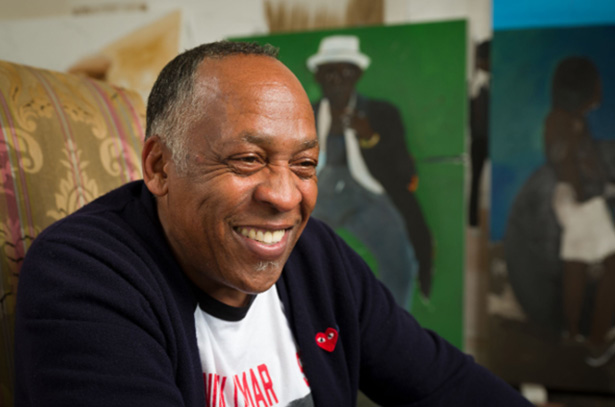
Henry Taylor
Henry Taylor’s imprint on the American cultural landscape comes from his disruption of tradition. While people figure prominently in Taylor’s work, he rejects the label of portraitist. Taylor’s chosen subjects are only one piece of the larger cultural narrative that they represent: his paintings reveal the forces at play, both individualistic and societal, that come to bear on his subject. The end result is not a mere idealized image, but a complete narrative of a person and his history. Taylor explains this pursuit of representational truth: ‘It’s about respect, because I respect these people. It’s a two-dimensional surface, but they are really three-dimensional beings.’[1]
Taylor is voracious and eclectic in his sourcing of subjects. This ‘hunting and gathering,’[2] as he defines it in his own words, is above all, an active process—one in which Taylor often mines his own history and experiences. In his studio, newspaper clippings and historical photographs of civil rights figures sit alongside his own snapshots of people both strange and familiar to him. This library of images, in turn, is surrounded by a collection of disparate objects that Taylor amasses from estate sales, his travels abroad, and local flea markets. Scattered across the studio spaces are infinite piles of historical tomes and artist’s monographs. All of these objects and visual documents eventually feature both in his paintings and as building blocks for totemic sculpture. But Taylor’s choice of painterly subject—from memory and archival materials, to the live sitter—is firmly dependent upon his sense of connection driven by empathy. His sumptuous depictions, painted rapidly and loosely, capture his subject’s nuances and mood with gestures and passages of flat, saturated acrylic color offset by areas of rich and intricate detail. The intensity with which he paints is reflected by his brushwork: a network of kinetic strokes that seek to capture a feeling before it flees. Taylor’s subjects, which range from members of the black community to symbolic objects representative of historical struggle, span the breadth of the human condition; each work is a holistic visual biography and permanent record of a person or people’s history.
Born in 1958 in Ventura, California, the youngest of eight children, Taylor’s initial exposure to the medium of painting came from his father, who was a commercial painter employed by the U.S. Government at a naval air station. In junior high school, Taylor began to vigorously absorb the tenets of major art historical movements spanning the Nineteenth and Twentieth centuries. Taylor later studied at Oxnard College, where he studied Journalism, Anthropology, and Set Design, and made the acquaintance of James Jarvaise, the Head of the Department of Fine and Performing Arts. Jervaise was instrumental in instilling the young painter with a sense of vocational efficacy that helped to focus Taylor’s efforts entirely on his artistic practice. Taylor’s formal training came in the 1990s when he studied at The California Institute of the Arts while also working as a psychiatric technician at Camarillo State Mental Hospital. It is here where Taylor developed his guiding sense of human connection while creating portraits of his patients. His practice evolved to exceed the boundaries of canvas: he began to paint the surfaces of found and discarded domestic objects like furniture, cereal boxes, empty cleaning bottles, and even packs of cigarettes. From these, Taylor creates assemblage sculptures, stacking and affixing disparate objects together to create, in some instances, faux African tribal masks from inverted Clorox bleach bottles erected on broomsticks.
What unifies Taylor’s practice across two and three dimensions is that it supersedes the confines of any traditional genre of painting and sculpture. His four-decade long practice combines pillars of figurative, landscape and history painting. Each result is a complete narrative that reflects the breadth and depth of his subject.
Taylor lives and works in Los Angeles. He has been the subject of numerous exhibitions in the United States and internationally, and his work is in prominent public collections including the Bourse de Commerce – Pinault Collection, Paris, France, The Bronx Museum of the Arts, Bronx NY, Carnegie Museum of Art, Pittsburg PA, The Fondation Louis Vuitton, Paris, France, Hammer Museum, Los Angeles CA, Institute of Contemporary Art, Boston MA, Los Angeles County Museum of Art, Los Angeles CA, The Metropolitan Museum of Art, New York NY, Museum of Contemporary Art, Los Angeles CA, Museum of Fine Art, Houston TX, Museum of Modern Art, New York NY, Nasher Museum of Art at Duke University, Durham NC, Pérez Art Museum, Miami FL, San Francisco Museum of Modern Art, San Francisco CA, The Studio Museum in Harlem, New York NY, and Whitney Museum of American Art, New York NY.
In 2018, Taylor was the recipient of The Robert De Niro, Sr. Prize in 2018 for his outstanding achievements in painting. Taylor’s work was presented at the Whitney Biennial at the Whitney Museum of American Art, New York NY in 2017 and 58th Venice Biennale, Venice, Italy in 2019.
[1] Sargent, Antwaun, ‘Examining Henry Taylor’s Groundbreaking Paintings of the Black Experience’, on: artsy.com, 16 July 2018
[2] Smith, Zadie, ‘Henry Taylor’s Promiscuous Painting’, on: newyorker.com, 23 July 2018
Inquire about available works by Henry Taylor
In 2018, Henry Taylor was the recipient of The Robert De Niro, Sr. Prize in 2018 for his outstanding achievements in painting. Taylor’s work was presented at the Whitney Biennial at the Whitney Museum of American Art, New York NY in 2017 and the 58th Venice Biennale, Venice, Italy in 2019.
Taylor’s work is currently featured in the group exhibition ‘i’m yours: Encounters with Art in Our Times’, at the Institute of Contemporary Art Boston, Boston MA and will feature in a forthcoming group exhibition, ‘Grief and Grievance: Art and Mourning in America’ at New Museum, New York NY from 27 January 2021. The Museum of Contemporary Art, Los Angeles CA is preparing a major survey exhibition of his work for 2022.
–
In accordance with recent government guidance, the gallery will reopen on 13 April.
Related Content
Current Exhibitions
1 / 11
